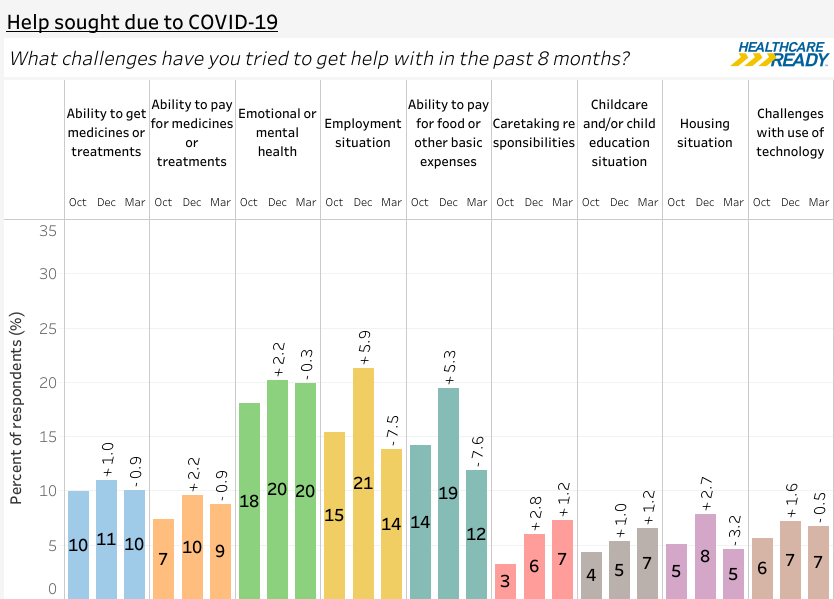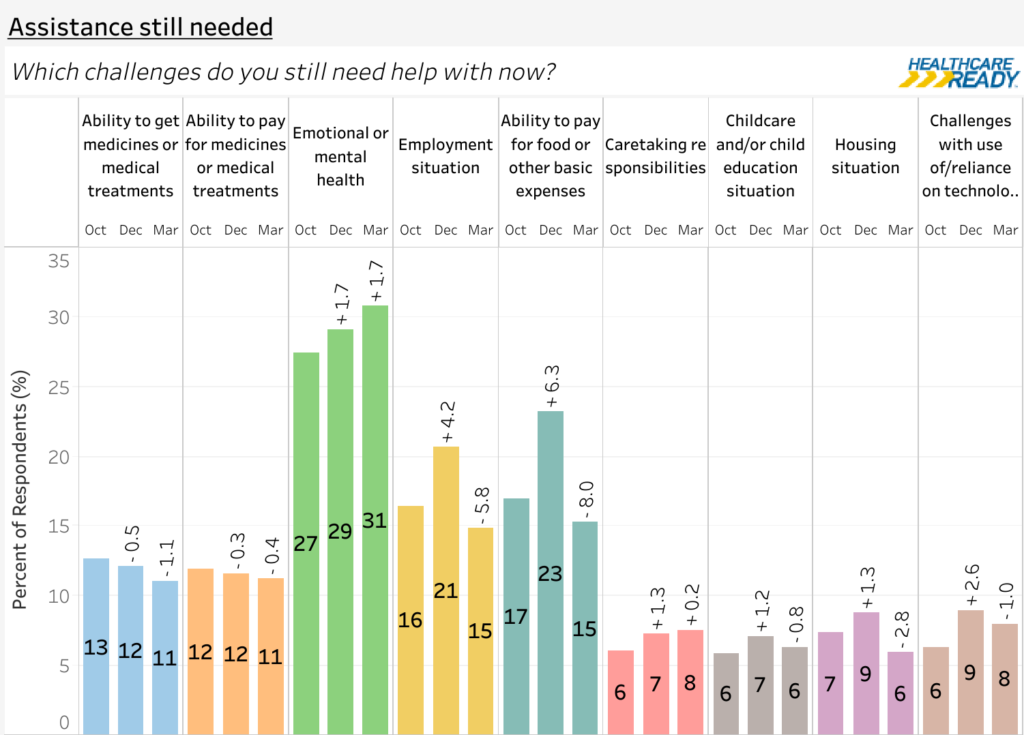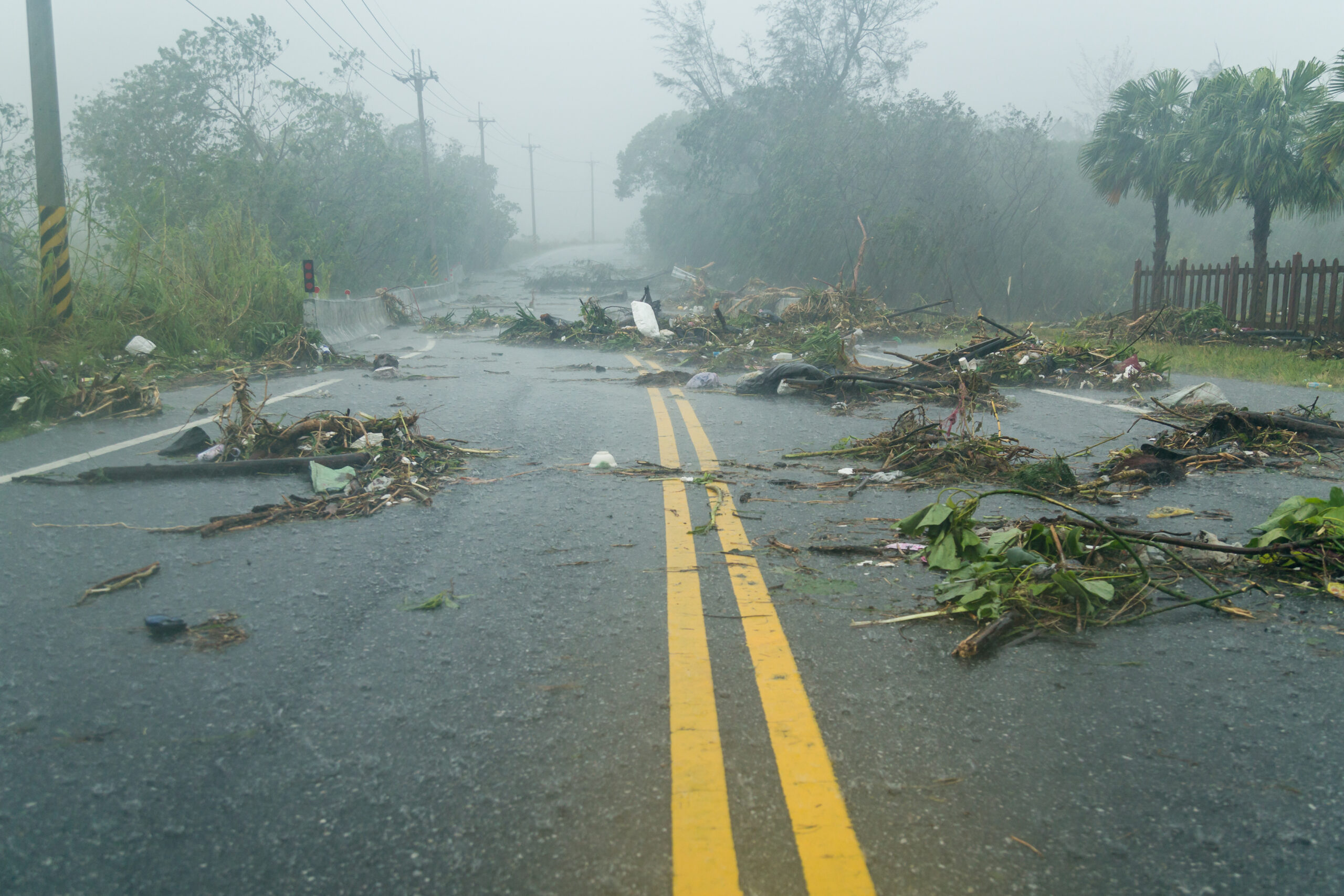National Poll Findings for the Impact of COVID-19 on Communities of Color (IC3) Project
In order to better understand the inequities, challenges, and concerns faced by communities around the United States grappling with the pandemic, we worked with polling firm YouGov to design an eight-question survey that measured how individuals fared from March 2020 to March 2021. The survey comprised representative samples of the population at three points during the pandemic (October 2020, December 2020, and March 2021).
For full survey methodology click here.
Findings Highlights:
Biggest challenges people faced during the pandemic
US residents faced overlapping economic, health, and social issues due to COVID-19. At least one in two respondents said their emotional or mental health situation worsened due to COVID-19 (in every poll). Most said emotional or mental health had the biggest impact (see image below). To view the interactive data, click here.
Nearly one in three respondents said their employment situation wordened
This demonstrates how much the pandemic also resulted in massive economic challenges. Across each time period surveyed, at least 25% of respondents said their ability to pay for basic expenses, including food, suffered. These challenges peaked in December 2020, when more than one in three (36.3%) respondents said they struggled to pay for basic expenses.
Areas in which people needed (and still need) help
Our data showed the majority (at least 50%) of US residents have tried to get help for at least one of many of the challenges they faced during the pandemic, ranging from mental health issues, to employment challenges, to housing insecurity. In every poll and for nearly every challenge we asked about, the number of people that needed help exceeded the number that tried to get help. For example, in March 2021, 20% of respondents said they tried to get help with emotional health in the previous 8 months. In the same poll, 31% of respondents said they needed help with the same challenge. This disparity may reflect a number of phenomena. People may not have sought help due to lack of confidence they would receive it. Some people may have stopped trying to get help over time, either because help was insufficient or too difficult to access. To view the interactive data, click here.


Two biggest challenges people expect to encounter in the next two years
We found that respondents feel challenges caused or exacerbated by the pandemic will remain even years after COVID-19 has been controlled. In March 2021, nearly two in three people (63.6%) said they expected to face at least one of the challenges in the graphic below in the next two years. Top challenges include emotional or mental health, employment situation, and the ability to pay for food or basic expenses.
Where people turned for help and where they expect to need help in the future
Respondents sought help from many sources during COVID-19, including their family and friends, government, and community organizations. More than half (56.5%) of respondents expected to need help from at least one source (see graphic below) in the next two years, as of March 2021. At least one in four respondents expect to turn to the Federal government for assistance. Respondents will also rely heavily on family and friends and state or local governments in the coming years.
Barriers that stopped people from getting help during COVID-19
More people faced more barriers to help between March and December 2020 compared to all other periods. During this time, 55% of respondents encountered at least one barrier to help. Fear of getting sick was the most common barrier that stopped people from getting help in October (20%), December (26%), and March (23%). For some barriers, there were significant differences between demographic groups in terms of who faced the barrier and when. For example, Hispanic, Black, and other non-White respondents increasingly said fear of being judged by their community was a barrier to getting help for them. This indicates a need to address stigma to seeking assistance for challenges like emotional or mental health and employment.
Poll Questions
The questions we asked in each poll are below.
Biggest Challenges People Faced During the Pandemic
Thinking about March 2020* to now, how much, if at all, has COVID or coronavirus changed you or your household’s situation in the following areas?
Why we asked: This question shows how Americans feel their household situation has changed across different domains of their lives, for worse or for better, because of COVID-19.
View the interactive data results for this question
Thinking about March 2020* to now, which ONE of these has negatively affected you or your household the MOST?
Why we asked: This question was asked to understand which issues posed the biggest challenge to respondents through the COVID-19 pandemic. By choosing only one answer, respondents were able to communicate which challenge posed the largest obstacle for them and their household.
Areas in which people needed (and still need) help
Thinking about March 2020* to now, which, if any, of the following challenges have you or your household tried to get help with because of COVID or coronavirus?
Why we asked: Many Americans required help meeting the challenges they faced through the pandemic. This question sought to understand for which of those challenges respondents needed outside assistance.
View the interactive data results for this question
Which, if any, of the following challenge(s) do you still need help with now?
Why we asked: Although respondents sought help through the pandemic, some challenges were too great to overcome. This question was designed to understand which challenges stayed unresolved, and for whom.
Two biggest challenges people expect to encounter in the next two years
Thinking about the next two years, which of the following do you think will be the biggest challenges for you or your household?
Why we asked: This question asks respondents to reflect on which impacts of the pandemic are most likely to continue to be pressing issues. Although they may not require help now, these answers provide us with an understanding of which issues remain, which cannot be resolved quickly, and which are consistent hardships for Americans.
Where people turned for help and where they expect to need help in the future
How much help, if any, have you and your household received from the following sources during COVID or coronavirus?
Why we asked: This question helped frame which organizations respondents went to for help, and how much help they actually received. This information shows which entities were able to help respondents.
Barriers that stopped people from getting help during COVID-19
Thinking about March 2020* to now, which, if any, of these barriers has stopped you or your household from getting help during COVID or coronavirus?
Why we asked: In addition to understanding which organizations Americans turned to for help, we also wanted to understand the hurdles that prevented them from doing so. This can help identify areas to reduce those barriers in recovery and planning for future events.
COVID-19 and Equity Project
Read more about our work on equity during the pandemic: COVID-19: Equitable Response and Recovery
* In October and December national polls, respondents were asked to consider March 2020 to the time of polling. In March, they were asked to consider July 2020 to the time of polling.
Healthcare Ready's COVID-19 Equitable Response and Recovery Project
Read more about our work on equity during the pandemic: COVID-19: Equitable Response and Recovery
Additional Analysis Requests
If you are interested in downloading complete data for your own analysis, please contact us at contactus@healthcareready.org.
Check this page often or follow us on Twitter to stay up to date with new analysis and findings.






